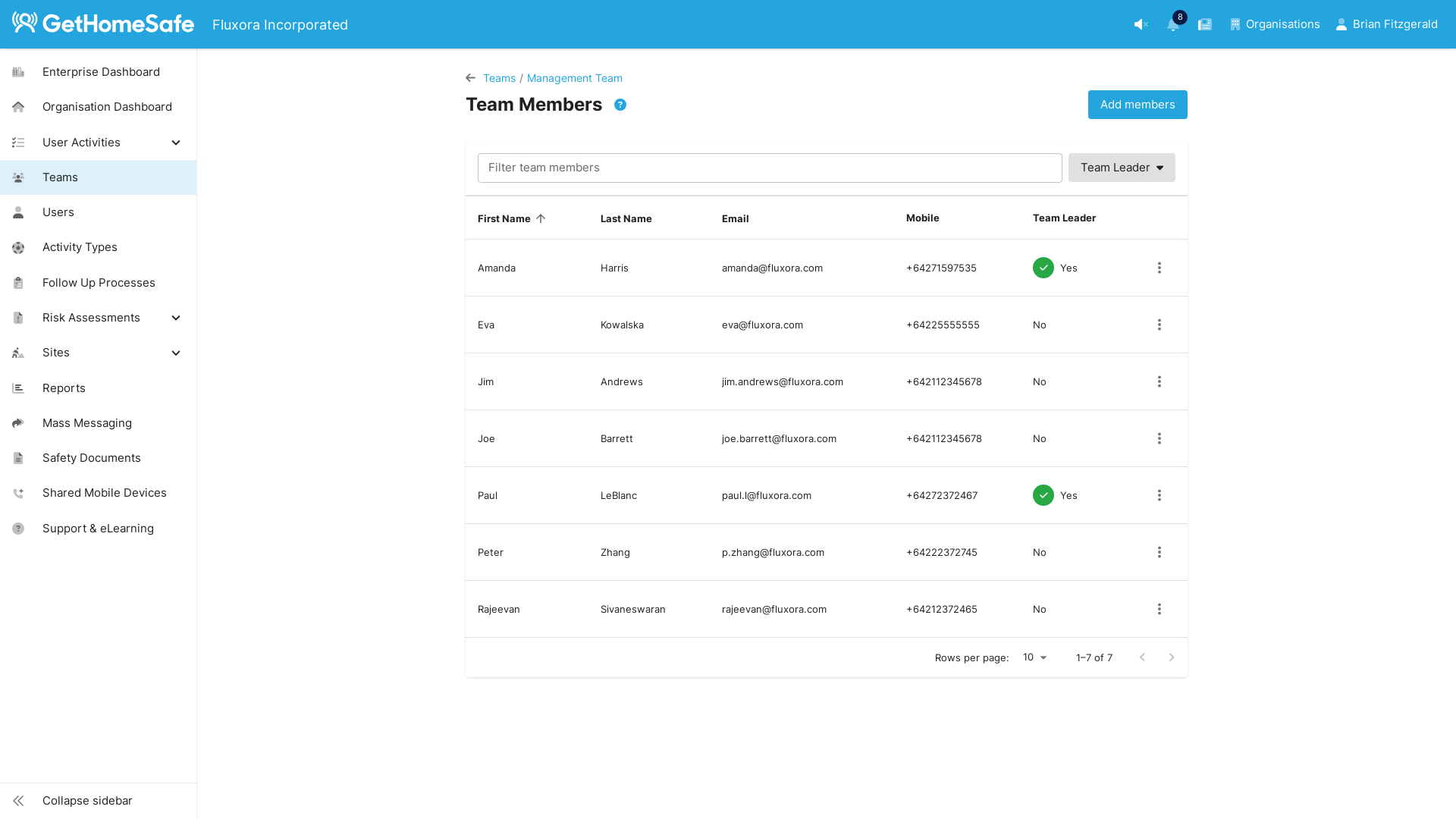Configuring and Managing Teams
This article offers a guide on setting up and managing teams in GetHomeSafe. You’ll learn how to create teams, add or remove users, and assign team leaders. Additionally, we’ll cover key settings for managing team leader responsibilities, including how to configure alert notifications for team leaders and any optional notifications they may require.
Admins are responsible for creating and managing teams, while users belong to these teams. Each team is set up to handle alert escalations, which are addressed by the team leaders. There is no limit to the number of teams within an organisation or the number of users in a team. However, each team must have at least two leaders.

Creating Teams
Admins create and manage teams.
- Log into the web portal as an admin.
- Open 'Teams'.
- Select 'New Team'.
- Configure team details.
- Save.

Deleting Teams
Admins can delete teams. If a team is deleted, all members will become team-less (unless they are in another team) and should be added to a new team. Deleting a team cannot be undone.
- Log into the web portal.
- Open 'Teams'.
- Select the team.
- Select the three dots to the right of its name.
- Select 'Delete Team'.
General Settings
Alert notification channels and optional emails use business hours to determine when notifications are sent. If a team leader's notifications are only enabled after-hours, they will not receive notifications if an alert or action is triggered by a team member during business hours.
Report summary times determine when reports are sent.

Members
The 'Members' section lists all team users (team members). Admins can add or remove members and assign them as team leaders.
To make a user a team leader, click the three dots next to their name and select 'add team leader status'. The same process is used to remove team leader status.
To add a user to a team:
- Log into the web portal.
- Open 'Teams'.
- Select the team.
- Open ‘Members’.
- Select ‘Add users’.
- Search for and add the user(s).

To remove a user from a team:
- Log into the web portal.
- Open 'Teams'.
- Select the team.
- Open ‘Members’.
- Find the user you want to remove by using the search function.
- Click the three dots next to their name, then select "Remove from Team. Please note: this action only removes the user from the team, not from your overall account.
Alert Notifications
Notification Times
Notification times are customized for each team leader and determine when they receive alert notifications through enabled channels. When an alert is triggered, team leaders receive notifications at the specified times.
- +0 mins: Sent instantly.
- +15 mins: Sent 15 minutes after the alert is triggered if no follow-up has been completed.
- +30 mins: Sent 30 minutes after the alert is triggered if no follow-up has been completed.
Notification Channels
Team leaders receive alert notifications through enabled methods. Notification times determine when these are sent. Each team leader can have one or more methods activated. These settings can be tailored for both business hours and after-hours, configurable in the teams general settings.
- Email: Sends an email with alert information and a link to the activity.
- SMS: Sends a text message with alert information and a link to the activity.
- Push Notification: Notifies the team leader of a triggered alert. They must be logged into the app.
- Phone call: Initiates an automated phone call to alert the team leader.

Optional Notifications
Optional Email Notifications
Customise email notification settings for team leaders.
- Start: sent when a team member starts an activity.
- ETA change: sent when a team member extends their timer.
- Alert followed-up: sent when another team leader completes following up an alerted activity.
- Request approved: Sent when another team leader approves or declines a requested activity.
- Home safe: sent when a team member completes an activity.
These settings can be tailored for both business hours and after-hours.
Optional Email Reports
Customise optional email reports sent to team leaders. This provides them with reports containing various activity information. The reporting schedule can be configured in the general settings.

The generation times for daily and handover shift summaries can be customised in the general settings for each team. Weekly summaries are sent every Monday at 6:10 AM, while monthly summaries are delivered on the first day of each month at 7:00 AM.